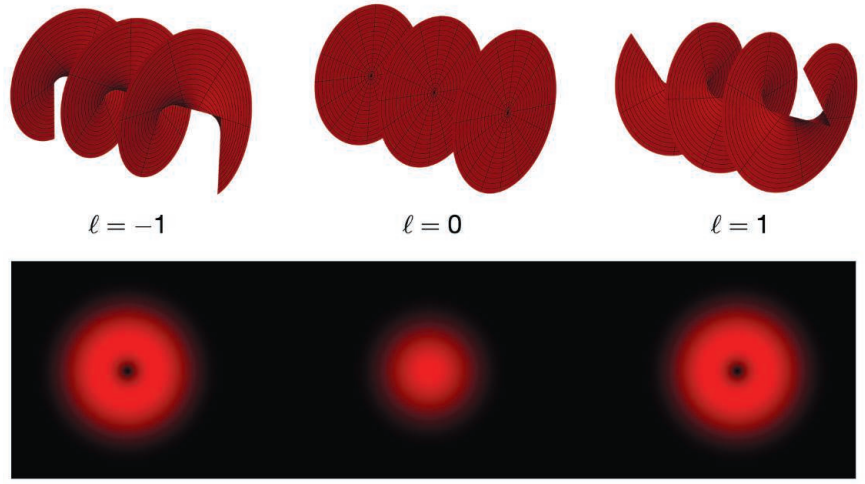Twisted light could vastly increase data transmission rates
July 1, 2013

Passing light beams through holograms caused them to twist either clockwise (–1) or counterclockwise (+1) or to have no twist (0); each case produced a specific profile in an optical fiber (credit: Science)
Boston University and USC researchers have developed a novel type of fiber optic line that allows them to encode data in a whole new way called “orbital angular momentum (OAM),” using the way light waves corkscrew as they travel. It could vastly increase data transmission rates.
Optics researchers have encoded information this way for more than a decade in open air. However, they were not able to do it in fiber, according to Science magazine. [See “Scientists twist light to send data at more than 2 terabits per second.”]
The solution found in 2011: glass fibers with a unique combination of standard chemical additives arranged in several concentric rings. The additives change the speed at which light travels through the glass, creating separate pathways for different OAM modes to travel inside the fiber.
Now in a new study published in Science, they sent 1.6 terabits of data per second in 10 different wavelengths and two OAM modes down more than a kilometer of specialized fibers. The method could be useful within data centers and for other high-end users such as scientific institutions. It could also combine with other methods for speeding up fiber transmission.